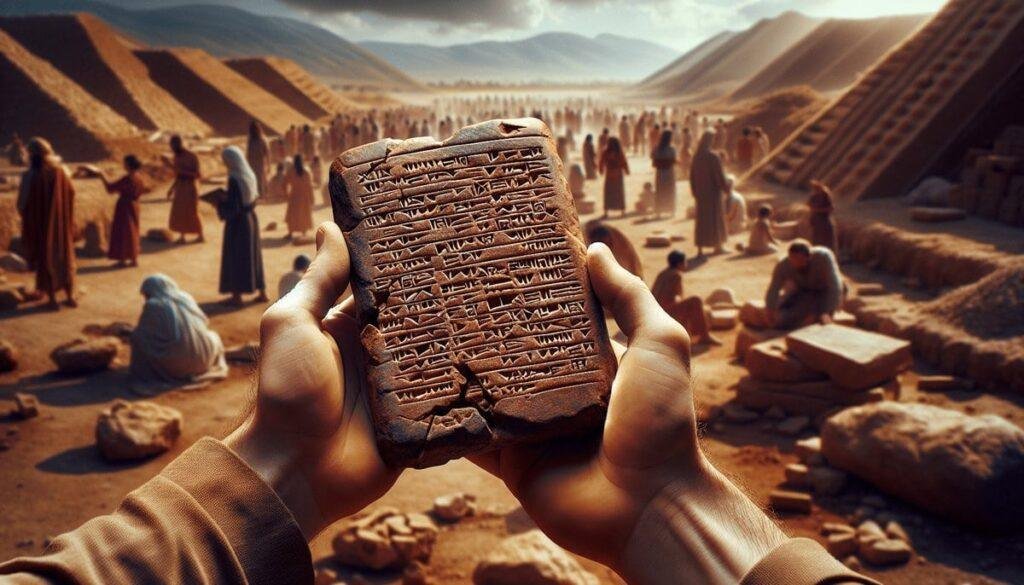Have you ever wondered what hidden treasures might still lie beneath the dusty surface of history, waiting to revolutionize our understanding of ancient texts? The sands of time have revealed yet another chapter in the enigmatic saga of the Dead Sea Scrolls. Unearthed in a previously undiscovered cave, this latest trove contains a groundbreaking New Testament text, promising to reshape biblical scholarship profoundly. This article will navigate the significance of this discovery, shedding light on its historical and archaeological impact while examining its modern implications for understanding scriptural authenticity and history.
Discovery Context
Biblical Reference and Historical Background
The Dead Sea Scrolls have long been a subject of fascination, holding significant biblical references and offering insights into ancient Judeo-Christian traditions. First discovered in the mid-20th century near Qumran, these texts date back to around the third century BCE to the first century CE. They provide crucial evidence of the religious practices and societal norms of that era. The scrolls encompass a range of texts, from biblical manuscripts to sectarian writings, and are mostly associated with the Essenes, a Jewish sect of the Second Temple period.
Geographic Location and Recent Findings
The newly explored cave, identified as Cave 53, is located near the western shore of the Dead Sea. This area, rich in archaeological promise, is known for its harsh terrain and unforgiving climate. Recent explorations led by a team of international archaeologists have uncovered fragments of what appear to be revolutionary New Testament texts. These fragments were found amidst pottery shards, cloth, and other materials typical of the Dead Sea Scroll caches.
The importance of this find cannot be overstated, as it not only expands the corpus of the Dead Sea Scrolls but also introduces texts from the New Testament, which were previously absent from these findings. This discovery caters to both the academic community and enthusiasts keen on understanding the nuances of early Christian history.
Archaeological Evidence
Specific Artifacts
The discovery in Cave 53 included artifacts such as parchment fragments, pottery vessels, and textiles. These scroll fragments have been meticulously preserved in the arid cave environment, protected from the sunlight and elements for centuries. Each piece of parchment, marked with Latin and Greek characters, is being carefully analyzed to reconstruct the text and ascertain its content.
Dating Methods and Physical Descriptions
To ensure the accuracy of this groundbreaking find, rigorous dating methods are employed, using radiocarbon dating and paleography—the study of ancient writing. These techniques help establish the timeline of the artifacts, reinforcing the authenticity of the texts while providing insights into the technology of the period. Physical descriptions of the artifacts reveal texts written in a bold, legible script, which is a testament to their significance and the care with which they were produced.
Expert Interpretations
Prominent scholars in biblical archaeology have weighed in on these findings, providing expert interpretations of their importance. Dr. Elisabeth Karr, a noted scholar, has stated, “This discovery has the potential to rewrite our understanding of early Christianity and its texts. The integration of these fragments will undoubtedly influence biblical scholarship for generations to come.”
Such high-level academic engagement underscores the potential implications of these newly discovered texts, opening the door to fresh interpretations and debates in theological circles.
Significance
Biblical Implications
The implications of finding New Testament texts among the Dead Sea Scrolls are staggering. They present a rare opportunity to compare existing New Testament writings with these older manuscripts, offering insights into textual variations and their evolution over time. Such analysis is crucial for verifying the accuracy and transmission of biblical texts through centuries.
Historical Impact
From a historical perspective, this discovery enriches our understanding of the early Christian community’s beliefs and practices. These texts offer a glimpse into the vernacular and theological discourse of the time, potentially bridging the gap between Jewish and early Christian traditions.
Modern Understanding and Research Status
The role of modern technology cannot be underestimated in this discovery. Advanced techniques in digital imaging and multispectral scanning are employed to enhance the legibility of these ancient scripts, allowing for deeper analysis and understanding. Current research status indicates that these texts will serve as a persistent subject of study, with scholars eager to publish detailed findings and interpretations.
Conclusion
In summarizing the impact of this revolutionary New Testament text discovered in the latest Dead Sea Scroll cave, the promise lies in the vast potential for enhancing biblical scholarship. It invites historians and theologians alike to reconsider longstanding interpretations and invites readers to engage with a newfound perspective on ancient artifacts. The future of this research poses exciting prospects and challenges, encouraging continued exploration and debate in uncovering the true essence of these texts.
To stay ahead of future discoveries, maintaining a keen interest in archaeological findings becomes crucial. Engaging with ongoing research and scholarly publications will enrich your understanding of how these ancient scripts continue to shape modern interpretations of religious history.





